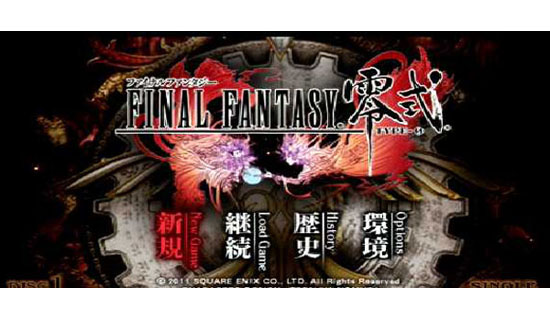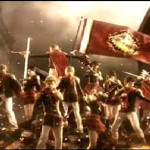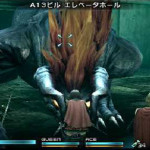Final Fantasy Type-0 is the first portable entry in the Fabula Nova Crystallis sub-series of Final Fantasy games, which begun with the controversial Final Fantasy XIII on the Playstation 3 in late 2009 (Japan release date). It was only the second entry in what would eventually be five titles (if you count Final Fantasy Agito, a mobile game that only exists on iOS and Android at the time of this writing), and was originally announced under the title Final Fantasy Agito 13. The game was directed by Tabata Hajime, who up until this point was known for his work on a couple of different portable/mobile titles in the Final Fantasy universe: Before Crisis -Final Fantasy VII- (for mobile phones), and Crisis Core -Final Fantasy VII- (for PSP). He also directed The 3rd Birthday on PSP, the kind-of sort-of third game in the Parasite Eve series. The point is that Tabata had some experience working on what you might consider to be the “side” Final Fantasy games, one of which garnered a good amount of praise (Crisis Core) for its extremely tight action battle system. Type-0 was said to use a version of that same battle system, so things were off to a promising start from the very beginning.
However, depending on your feelings toward Final Fantasy XIII’s story and a certain commonly reoccurring setting in Japanese RPGs, Type-0 had a couple of factors going against it from the very beginning as well. The first being that its story was heavily rooted in that of the Fabula Nova Crystallis sub-series. Even though the series only had one entry in it, it was already proving itself to be a convoluted mess of made-up and hard to follow terminology with a story that just seemed unnecessarily complex at times. It also was revealed that the story was going to center around a group of students (Class Zero) who were going to be sent on missions across Orience to aid in war efforts. We’d all be be lying if we said that at this point the idea of using students as central characters in a JRPG was not a bit of a cliche. Would Type-0 be able to keep fans happy in an age where the Final Fantasy series was rapidly coming under more negative criticism than it ever had before?
The short answer is this: Though I am not incredibly familiar with most of the games in the Fabula Nova Crystallis sub-series, I believe that Type-0 stands out as its finest entry. It is by no means a perfect game, but it accomplishes what it sets out to do extremely well. This game may have no equal on the PSP when it comes to visuals, as it looks absolutely fantastic. It’s not surprising at all that you see the PSP visibly chugging along at points just to keep up with Type-0. This also explains why the game is spread across two UMDs (not a very common occurrence among PSP games), particularly given that it contains rather lengthy cut-scenes. The music is also up to the high standards set by the visuals, composed by Ishimoto Takeharu (known for composing the soundtracks for Before Crisis, Crisis Core, and The World Ends With You). The soundtrack itself is full of very “heavy” tracks (which is appropriate given the tone of much of the story), but not in the way you would think. They are simply heavy in their mood, as opposed to having a chunky rock-driven sound. Many tracks feature guitars used in unexpected ways, as well as a lot of orchestral and choral sounds. And for Japanese rock fans, the theme song for this game is “Zero” by the band Bump of Chicken.
The game-play systems are an interesting mix between Crisis Core and some more traditional Final Fantasy series trappings. Type-0 is largely mission-based, but there’s much more to it than there was in Crisis Core. There are fourteen different members of Class Zero that can be used to form an active party of three characters, with the rest able to be included in reserves that become available should a character die. During missions the party is moving down “corridors” for the most part, within limited areas. However when not on missions the party can either interact with a plethora of NPCs within the school area to potentially increase stats and gain items, accept quests, or spend there time out on what is essentially a traditional Final Fantasy world map. From there they can travel to other cities to purchase new equipment and take on quests, or travel into monster-filled areas such as caves to grind out levels and obtain treasure. Though travel is only possible by foot at first, travel options eventually open up around riding Chobobos (you can raise them on a ranch within the school) and taking airships to specific destinations on the map.
The battle system delivers on its promise to be a modification of the one found in Crisis Core, and this is not a bad thing. It is a very fast and completely action-oriented battle system that may take those unfamiliar with action RPGs by surprise at first. Each student in Class Zero has a very distinct set of actions, so it will never really feel like all of your characters are basically the same. Each character has their own unique weapon and set of special attacks and abilities that are unlocked by gaining levels and acquiring points to do so. And with the ability to switch between any of the three active party members at any given time (the other two remain AI controlled), battles remain very fast and satisfying throughout most of the game. It’s surprising how much depth resides within this game’s battle system, as there are portions of it that I went most of the game without exploring much at all: Triad Maneuvers (combining the attacks of the active party members into one higher damage attack), Eidolons (temporarily sacrificing the character in favor of controlling some of the most popular Final Fantasy series summons), and even various spins on classic Final Fantasy spells that prove to be useful in different situations.
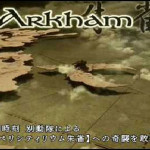 | 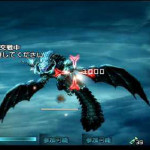 |
| This means that the fifteenth playable character is Batman, right? | You even get to do a little bit of dragon shooting! |
Being a major Japanese release on the PSP, it just wouldn’t be right if Type-0 didn’t come with some sort of multi-player functionality. This is actually where many people (including myself) got the misconception that this was attempting to be a Monster Hunter-like game, which is simply not the case. The multi-player element is ad-hoc mode only (not compatible with PSP model 1000s), and is only available when going on a mission. The player will be given a choice before starting a mission to allow CPU controlled characters come in and out of your party (they tend to replace at least one of your active party members and are generally lower level, so I found this option not worth doing), to allow other players join your party via ad-hoc, or neither. It certainly adds a very interesting element to the game, though is ultimately useless outside of Japan (and probably even in Japan at this point, since I can’t believe people are still carrying around this game and a PSP nowadays) save for via a Playstation 3 and Ad-Hoc Party (if there is even much of a population there either).
The story is perhaps this game’s most obvious weak point. Since it takes place within the Fabula Nova Crystallis world, it suffers from the needless plot complications and “Nomuraish” (a coin termed by Japanese gamers to describe the ridiculous terminology such as “l’Cie”, “fal’Cie”, etc.) that seem to be required. And while Type-0 is somewhat similar to Final Fantasy XII in its Matsuno-like tale of political conflict between kingdoms, it is much more similar to XII in a more unfortunate way: The story falls apart in the last quarter of the game. A major event occurs for seemingly no real reason, leaving the story of a game whose plot was already a bit incoherent in an even bigger mess. There are some intriguing points to be found, but it’s clear that more thought should have been given to how the story was presented. A warning to those who wish to import in order to play this on the PSP: Make sure you have a reasonably high level of Japanese proficiency if you want to understand the plot as it is told to you. The game is fairly playable otherwise though, even with little Japanese proficiency.
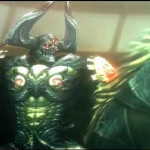 | 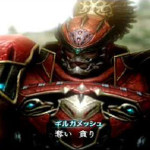 |
| Odin looking particularly bad-ass! One of my favorite FF summons. | Another one of my favorites, Gilgamesh. In this particular game he’s voiced by Nakai Kazuya, who also voices Zoro in One Piece! |
One of Type-0’s greatest achievement is its replayability. Not only do you get to keep your stats and upgrades on subsequent playthroughs, but more of the story is actually revealed that you would not have seen your first time through. New bosses that require higher level parties to defeat also become available. While the world does not seem very big at first, it unfolds quite a bit and there is more than enough content here to justify multiple playthroughs. Its largely mission-based structure and multi-player features make it one of the best portable installments in the Final Fantasy series ever created. It exceeded my expectations despite its flaws, and I only wish that more Final Fantasy games of this time would have taken a design approach more similar to this one.
